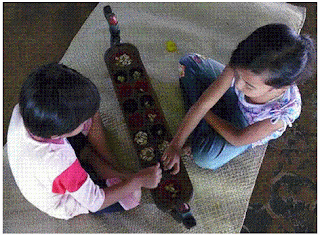 |
| Ancak-ancak Alis - Traditional Games |
One more Javanese traditional game is often played by children without the need for fixed equipment, which is indifferent eyebrows. In the old days, before the independence of Indonesia, the game is accompanied by songs Dolanan is famous in many rural areas in the agricultural community of Java. Dolanan is usually played by young boys and girls of primary school age. But sometimes children also greater in ancient times still likes to play this Dolanan. Moonlit night to their favorite time to play, especially if fitted holiday. But sometimes also played in the morning or late afternoon, according to the spare time of which is owned by the children. In school, children play at recess time.











